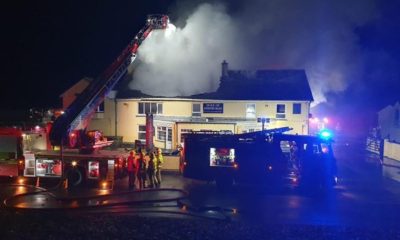Health
Scale of ‘devastating ambulance waits’ across Wales revealed in latest figures
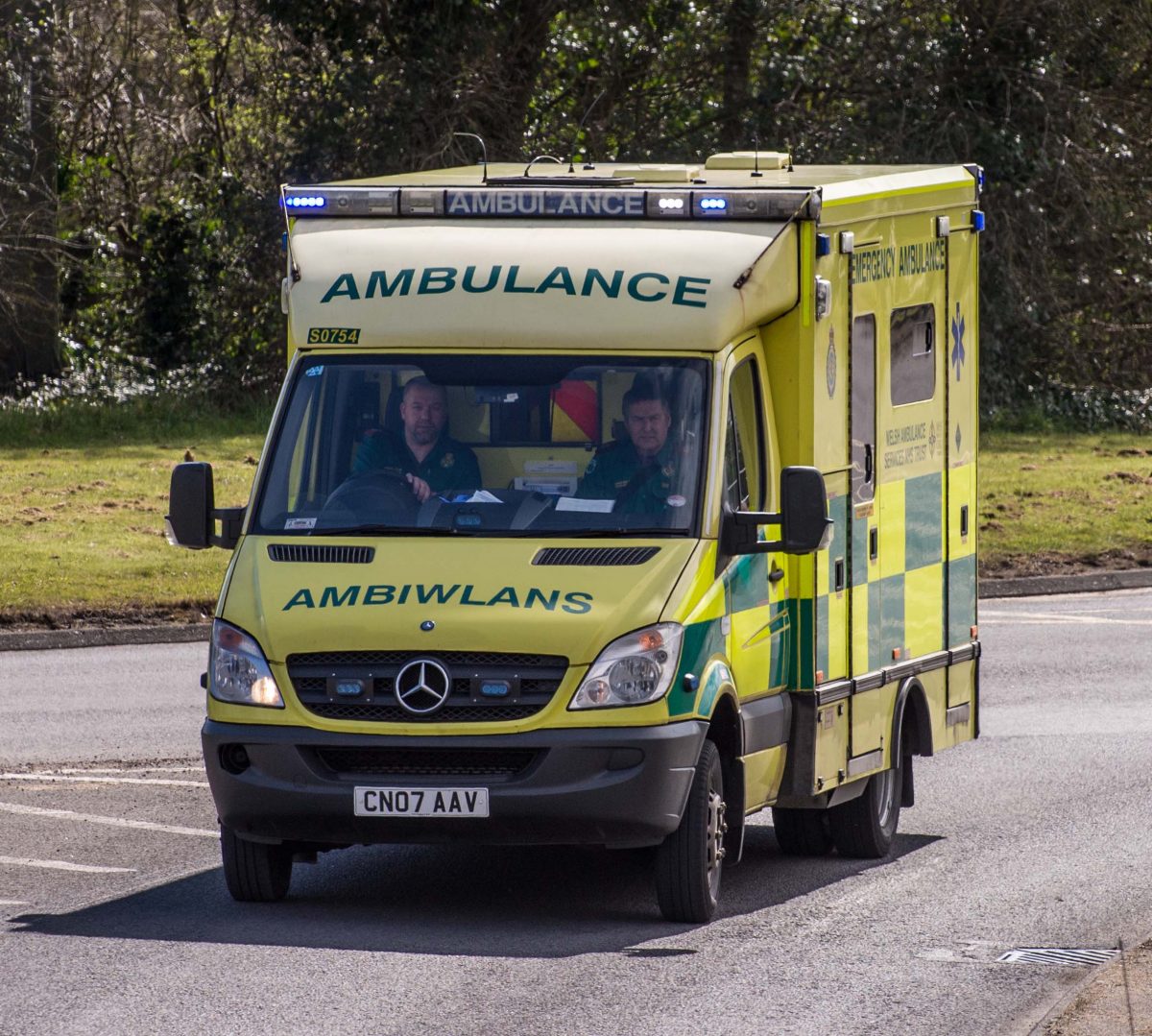
OVER 10,000 people with serious conditions are waiting over an hour for an ambulance in Wales.
In figures obtained by the Welsh Conservatives, it was found 3,351 people that rang an ambulance and were designated amber in April had to wait over four hours for it to arrive.
According to monthly Welsh Government statistics, a staggering two-thirds (67.1% or 10,157) of amber ambulances took over an hour to reach their patient, but it took a written question from the Leader of the Opposition to find out exactly how long people had to wait.

The information uncovered that 344 people waited over 12 hours. 14 waited over a day for an amber call to be reached, half of which were in North Wales.
Calls for ambulances are triaged into red, amber, and green calls. Red calls are life-threatening but serious conditions like strokes are classified as amber by the Labour Government in Cardiff Bay.
Three red-calls also took over an hour to reach their patient in April, two in Dyfed and one in the Swansea Bay health board area.
Only 51% of responses to immediately life-threatening calls arrived within eight minutes, down from 61% in April 2021. The target of 65% of red-calls reaching their patient within eight minutes has not been reached in over 18 months.
It follows news of dozens of incidents when police cars had to be deployed as ambulances.
Commenting, Welsh Conservative and Shadow Health Minister Russell George MS said: “It is scandalous how long people have to wait for ambulance in Wales, no matter how serious the emergency – if you’re in need of one, your problem needs urgent attention.
“I cannot imagine the anguish people feel as they or a loved one are left languishing in pain because Labour’s mismanagement of the NHS has turned ambulance provision into a postcode lottery.
“We know that ambulance delays are down to them getting stuck at A&E departments, full and slow-moving because of issues in accessing other parts of the NHS.
“That’s why Labour need a plan to ensure people come to hospital as a last resort, not because they have no confidence in or access to other parts of the health service.”
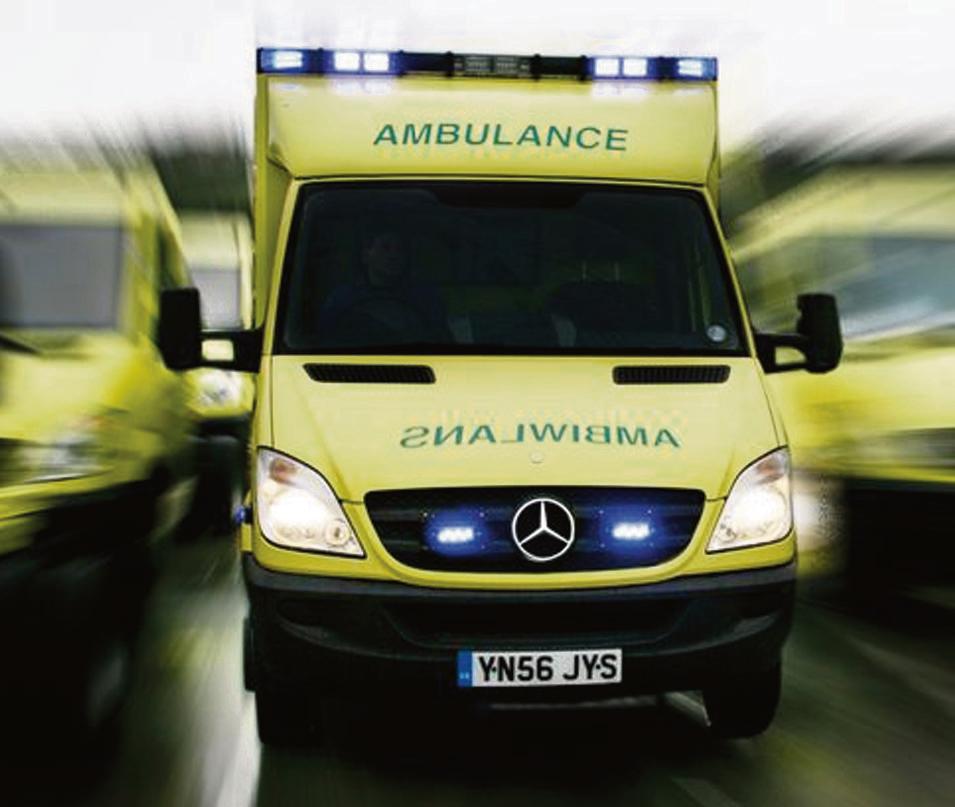
Andrew RT Davies MS, the Welsh Conservative leader who submitted the question, added: “These waits are very concerning, more so because we had to dig them up because ministers do not routinely publish them.
“We know the pandemic has hit all aspects of the NHS hard, but we know that the NHS under Labour has been in dire straits for a long time and ambulance waits have been going downhill for a while.
“As I told the First Minister back in March, he has failed to plan for the end of Army assistance in the ambulance service and now patients and paramedics are paying the price.”
Responding to the publication of Healthcare Safety Investigation Branch’s Interim Bulletin Harm caused by delays in transferring patients to the right place of care, Dr Henderson said: “It is well-known among health care professionals, especially the Paramedicine and Emergency Medicine workforce, that ambulance handover delays cause serious harm to patients. Instances of ambulance handover delays became a frequent and serious threat in late 2020 and early 2021 and in response to this rising threat The College published Ambulance Handover Delays: Options Appraisal. In November 2021, The Association of Ambulance Chief Executives published their report Delayed hospital handovers: Impact assessment of patient harm which found that these delays were leading to an unacceptable level of patient harm and presented a serious risk.
“We welcome the HSIB interim bulletin and its safety recommendations, we urge the Department of Health and Social Care to prioritise and urgently act on these recommendations. The situation continues to worsen, and it is highly detrimental to patient safety, to paramedic and EM staff, and public confidence in the emergency care services. Critically, the Urgent and Emergency Care system is failing to function as it should, we must do all we can to change that.”
Figures released recenerly show that in last month only half (51.2%) of red ambulance calls were met within the target time across Wales. In some areas such as Hywel Dda Health Board it is as low as 39%.
The Welsh Liberal Democrats are calling on the Welsh Government to address waiting times for primary care services to relieve the pressure on A&E.
Commenting Jane Dodds MS said: “This simply cannot go on. Our NHS staff and ambulance are doing everything they can, but people’s lives are at risk when ambulance response times are so poor.
“Week after week I hear stories of people waiting hours for an ambulance, hours for treatment in A&E and even being treated in the back of ambulances sat outside our hospitals.
“The Welsh Labour Government is failing time and again to address the crisis in our NHS.”
A Welsh Government spokesperson said: “As the health service continues to recover from the pandemic, and more people are coming forward with health concerns, we have seen the highest number of referrals for a first outpatient appointment since January 2020, with just over 115,000 referrals made in March. This increase in referrals helps to explain why the total waiting lists size increased by 1.4% on the previous month. It should be noted that activity levels for treatment and outpatients are at their highest level since the start of the pandemic.
“The number of outpatients appointments in March, was the highest since January 2020 (255,384). On top of this the numbers of inpatient and day case treatments, were the highest since the start of the pandemic.
“The number of patient pathways closed in March, that is people who have started or no longer require treatment, was the highest since the start of the pandemic, 1.7% more per day on average than in February.
“While the total numbers waiting for diagnostic tests continues to increase, the numbers waiting over the 8 weeks target decreased for the second month in a row to their lowest level since April 2021 and by 4.9% compared to February 2022.
“March also saw the highest level of activity in cancer services since December 2020. There was a 12.4% increase in the number of people starting their first treatment following a new cancer diagnosis, compared to the previous month. 12,643 pathways were closed following patients being informed they did not have cancer, an increase of 11.1% on February 2022.
“The Planned Care Recovery Plan published last month set out a series of ambitions. The first ambition was to reduce the number of open pathways waiting over 52 weeks for a first outpatient appointment to zero by the end of 2022.
In In March 2022, the number of pathways waiting over 52 weeks for the first outpatient appointment decreased by 1% compared to February.
“In March 2022, the number of pathways waiting over 52 weeks decreased by 4.8% compared to March 2021.
“Despite the percentage of patient pathways waiting more than 36 weeks increasing in March, the average time waiting for treatment fell and the proportion waiting less than 26 weeks increased.”
“This month sees the first publication of 111 data since the service was rolled out across Wales. In April almost 86,000 calls were made to the 111 service, an average of 2,863 calls per day. The service is run by the Welsh Ambulance Services NHS Trust and can be accessed online at 111.wales.nhs.uk or by telephone by calling 111, will give people up-to-date health advice and guidance on which NHS service is right for them.
“999 emergency ambulance and emergency department staff and services remain under considerable pressure and performance is not where we want it to be. Our Six Goals for urgent and emergency care programme has been launched to support improvements in outcomes and experience by helping staff to deliver the right care, in the right place, first time whenever possible.
“There was a decrease in average daily attendances to emergency departments in April, and a slight improvement in performance against the targets. The number of life threating ‘red’ calls remains high, increasing by 36% when compared to the same month in 2021. There is a live national delivery plan in place to support continuous improvement, including in support of tackling ambulance patient handover delays.
“It is important to note that during March nearly 400,000 patient consultations were seen by the NHS in Wales for emergency or elective treatment.”
Health
Doctors to enter pay negotiations with the Welsh Government
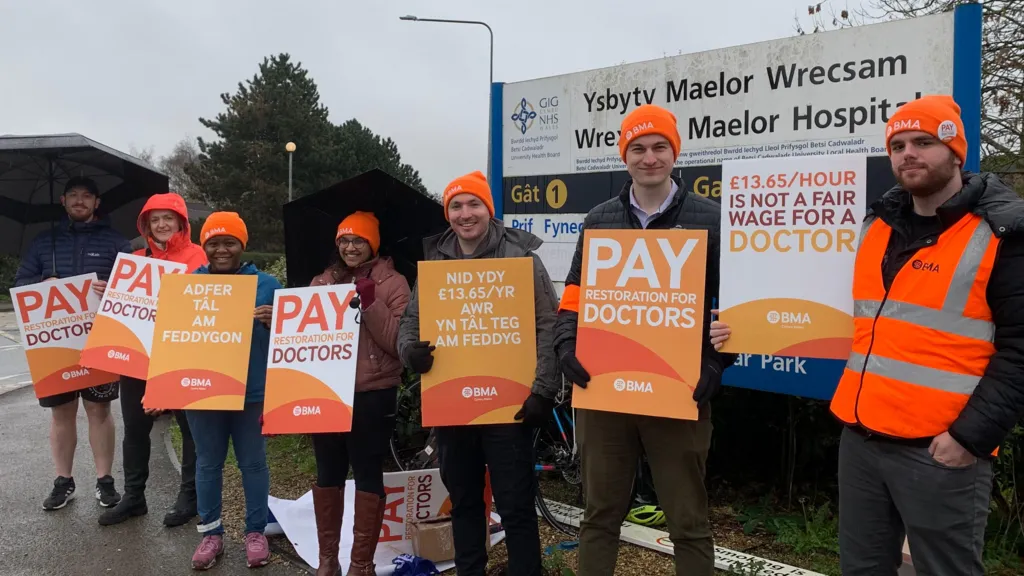
BMA CYMRU Wales has suspended forthcoming industrial action for Consultants and SAS doctors following a constructive meeting with the Welsh government to resolve its pay disputes.
As a result of sustained pressure, including three rounds of industrial action by junior doctors in Wales, the Welsh Government has made a significant proposal to form the basis of talks to end the pay disputes with all secondary care doctors including Consultants, SAS and Junior doctors.
Since the meeting last week, the committees representing doctors from all three branches of practice have voted to enter pay negotiations based on this proposal.
The planned 48-hour strike by Consultants and SAS doctors due to take place from 16 April will now be suspended.
Junior doctors have paused plans to announce more strike dates whilst they enter negotiations with the Welsh Government.
The Welsh junior doctors committee, Welsh SAS committee and Welsh consultants committee will now each engage in pay negotiations, with the aim of reaching deals which can be taken separately to their respective members.
Dr Oba Babs Osibodu and Dr Peter Fahey co-chairs of the BMA’s Welsh Junior doctors Committee said:
“This is a significant step forward. It is sad that we had to take industrial action to get here, but we are proud of members for demonstrating their resolve in pursuit of a fair deal for the profession.
“Whilst we are optimistic and hope to quickly resolve our dispute, we remain steadfast in achieving pay restoration. Until we reach a deal, nothing is off the table.
“We will continue to work hard to reach an offer that is credible to put to members who will ultimately have the final say.”
Dr Stephen Kelly, chair of BMA Cymru Wales’ Consultants committee said:
“The Welsh Government’s recent efforts to reach an end to the pay dispute are encouraging and so we have called off our planned strike for now whilst we allow time and space for negotiations to take place.
“We’re hopeful that we can reach a deal that sufficiently addresses years of erosion to our pay to help retain senior doctors in Wales but remain ready to strike if we’re not able to do so during negotiations.”
Dr Ali Nazir, chair of BMA Cymru Wales’ SAS doctor committee said:
“As a committee, we felt that this latest development goes someway to understanding the strength of feeling of our members. We will work hard to reach a settlement that sufficiently meets the expectation of our colleagues who have faced real terms pay cuts of up to a third since 2008/9.”
In August last year, the BMA’s committees representing secondary care doctors in Wales voted to enter into separate trade disputes with the Welsh Government after being offered another below inflation pay uplift of just 5% for the 23/24 financial year. SAS doctors on some contracts were offered as little as 1.5%. This was the lowest pay offer any government in the UK offered and less than the DDRB, the pay review body for doctors and dentists, recommended last year.
As part of their disputes, SAS doctors, consultants and junior doctors carried out successful ballots for industrial action. Since then, junior doctors have taken part in 10 days of industrial action since January this year.
Health
BMA pay disputes – Junior Doctors, Consultants and Specialist Doctors

THE WELSH Government and BMA Wales’ three national committees representing consultants, SAS doctors and junior doctors have today agreed to formal negotiations about pay.
Planned industrial action will be suspended during the negotiations.
A mandate is being developed for the talks with all three BMA branches of practice with the aim of resolving the disputes over pay for 2023-24.
In the context of the most challenging financial position the Welsh Government has faced since devolution, a significant amount of work has been undertaken to identify funding to support the negotiations.
First Minister Vaughan Gething said: “We recognise the strength of feeling among BMA members and that industrial action is never taken lightly.
“This is a government that listens and engages to find solutions. I prioritised a meeting with the BMA directly alongside the Cabinet Secretary for Health to reinforce our commitment to that partnership approach.
“We currently face the most severe financial situation in the devolution era which makes our task far harder. Despite this backdrop, we have worked to identify a way forward that I hope will lead to the successful resolution of this dispute and ensure that doctors can return to work in NHS Wales.”
Cabinet Secretary for Health Eluned Morgan added: “Even in these very challenging circumstances, we have worked in social partnership with the BMA and NHS to maintain patent safety during industrial action.
“But the strikes have been very disruptive to the delivery of NHS services – none of us want to see doctors on strike. I am pleased the three BMA committees have agreed to pause further industrial action and begin formal talks with Welsh Government and hope we can bring an end to this dispute.”
Health
NHS dental charges in Wales to increase from April

THE COST of NHS dental treatment in Wales will increase from 1 April 2024.
The increase in dental charges is the first since April 2020 and are overall still lower than in England. Any revenue generated from the increased charges will be re-invested back into NHS dentistry services.
From April 2024, the three standard charges will increase to between £20.00 and £260.00 depending on the treatment required, and urgent treatment will increase to £30.00.
Around 50% of people receive NHS dental treatment for free in Wales. Those eligible for free treatment include children under 18 or those aged 18 and in full time education, pregnant women or those who have had a baby within the 12 months of treatment starting, anyone who has dentistry treatment carried out in a hospital or people on certain benefits.
Additionally, the low-income scheme provides full or partial help with health costs, depending on individual circumstances.
Despite pressure on budgets the Welsh Government has increased investment for dentistry, with funding £27 million higher than it was in 2018 to 2019. Included within this increase is an additional £2 million a year to address local access issues.
Changes to the dentistry contract in Wales include a requirement for NHS practices to see new patients. Since this was introduce in April 2022, 312,000 people who couldn’t get an appointment before have now received NHS dental treatment.
Cabinet Secretary for Health and Social Care, Eluned Morgan, said: “Because of the extreme pressure on our budget we have had to consider if additional funding should be raised by increasing dentistry charges.
“This is the first increase we have made to dentistry charges since 2020. Around half of patients don’t pay for their NHS dental treatment and we will continue to protect those that are least able to afford to pay.
“It is vital we all keep our teeth and gums healthy. This is why we are working to make it easier for people to see an NHS dentist by increasing the number of new NHS places and helping dentists to focus on those who need help by changing how often we see a dentist for routine appointments.”
Commenting on the announcement Russell George MS, Welsh Conservative Shadow Health Minister said: “Vaughan Gething’s arrogant choice to hike up dental charges for the people Wales, rather than cut his Labour Government’s wasteful spending is wrong.
“All standard charges are being increased for dental services by the Labour Welsh Government, including for urgent treatment, which will add to cost-of-living pressures.
“While Welsh Conservatives agree that dental services require greater investment after years of Labour underfunding them, ministers should look at cutting vanity projects like their plans to create more politicians before passing on the cost to patients.”
-

 Business3 days ago
Business3 days agoBluestone National Park Resort payments expected to end
-

 Community5 days ago
Community5 days agoThe Harbourmaster: Special rail excursion draws crowds to Milford Haven
-

 News4 days ago
News4 days agoDragon LNG ‘monitoring’ scrap car blaze in Waterston
-
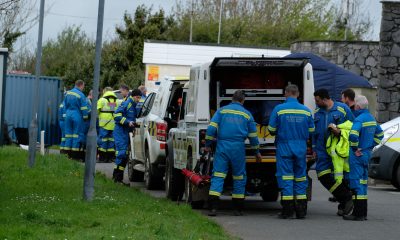
 News5 days ago
News5 days agoSearch for Luke, 19, reported missing in the Pembroke Dock area, continuing
-

 News2 days ago
News2 days agoSearch for missing teenager Luke continues at Pembroke Dock
-
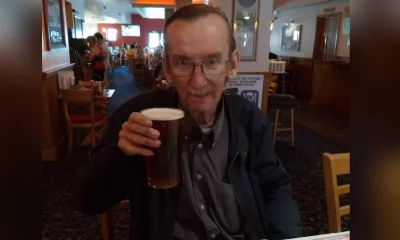
 Crime3 days ago
Crime3 days agoEstate agents admit health and safety failings following fatal market incident
-

 News6 days ago
News6 days agoMajor search in the area of The Cleddau Bridge and Hobbs Point
-
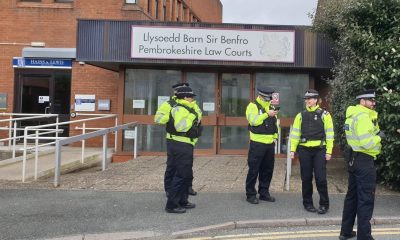
 News2 days ago
News2 days agoMan jailed after scarring police officer in Narberth altercation


















